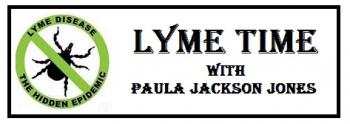Out with the old, in with the new
Recently, the federal Tick-borne Disease Working Group met for meeting #8, recapping all the work that had been done, identifying gaps and areas needing improvement along with recommendations. The opening remarks came from Admiral Brett Giroir, MD, Assistant Secretary for Health at the U.S. Department of Health and Human Services (HHS). The Assistant Secretary for Health leads development of HHS-wide public health policy recommendations, oversees 11 core public health offices — including the Office of the Surgeon General and the U.S. Public Health Service Commissioned Corps, which has approximately 6,500 uniformed health officers who serve in nearly 600 locations around the world to promote, protect and advance the health and safety of our nation and our world. He also oversees three Presidential and 11 Secretarial advisory committees.
Dr. Giroir is a physician, scientist and innovator. He is a former medical school executive and biotech startup CEO, and has served in a number of leadership positions in the federal government as well as academia.
His statement was strong and filled with compliments for all the work that had been done by the subcommittees and working group members in such a short amount of time. He stated that “its ok to say that we don’t know. We should be humble about what we do and do not know and transparent about it as well.” He further stated that although the report was full of controversial areas, the recommendations were strong and valid and supported by scientific evidence.
This got me thinking about all the other changes that we’ve encounter this year alone and what’s being brought into the limelight (no pun intended):
* Ticks are resilient and can remain active all year long
* Prevention needs to be a year-round routine
* Ticks can carry more than just Lyme Disease and we’ve seen a huge rise with Babesia and Anaplasmosis here in Maine
* Ticks are transported by many different rodents and birds, not just deer
* Reducing foliage such as Japanese Barberry can reduce deer and ticks in your yard
* The standard ELISA blood test for Lyme Disease is at best 60% reliable and is only looking at one strain of one disease
* Ticks can transmit more than one tick-borne disease and so therefore, co-infections must be ruled in or ruled out for proper treatment and recovery.
* There are 15 active species of ticks residing here in Maine and over 50 percent of all ticks are carrying some sort of disease.
* The Alpha Gal Syndrome came onto the radar screen following the discovery of the Lonestar Tick and its ability to transmits a sugar molecule called alpha-gal into the body via a tick bite. In some people, this triggers an immune system reaction that later produces mild to severe allergic reactions when they eat red meat.
* Recently, the Centers for Disease Control and Prevention published a report that they are working with public health, agricultural and academic experts to understand the possible threat posed by the spread of the Asian Longhorn tick (discovered in several U.S. states but not yet in Maine), what disease pathogens they transmit to animals and humans, what laboratory tests are needed to diagnosis and determine effective prevention and control strategies.
But what truly warms this advocate’s heart is the recent surge in state and national media reporting that ticks are still active even in the winter months. For those of you who know me and my organization, this is something that we’ve been saying for years. Ticks don’t migrate south in the winter. They stay local and hibernate under leaf liter and wait for warmer temps to become active and seek out their blood meals. Because of this, prevention for both humans and pets needs to be year-round.
As we prepare for the winter/spring season, we remain busy with prevention talks and connecting those who have been exposed to tick bites and tick-borne diseases to local resources. As always, if you or someone that you know has been exposed or thinks that they may have, you can visit our website for more information and connections to providers and resources that can help.
As we unite, as one voice with one message, at local, state and federal levels, change will happen!
Paula is the president of the MLDSE, the co-chair of the Access to Care Services and Patient Support subcommittee of the Federal HHS Tick-borne Disease Working Group, the Maine-partner of the national Lyme Disease Association, member of Maine’s CDC Vector-borne Workgroup and active in Maine’s Lyme legislation. You can reach her at paula@mldse.org and visit her website www.mldse.org
Event Date
Address
United States























